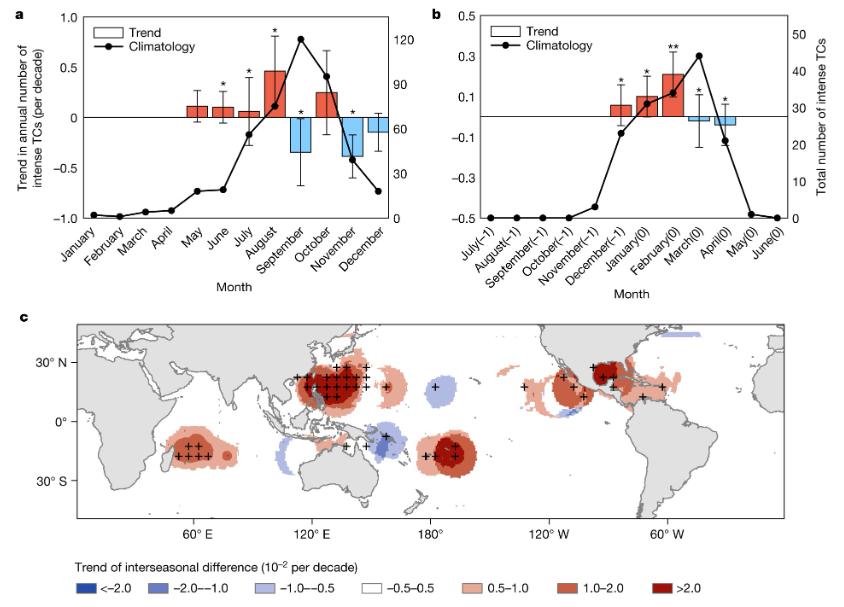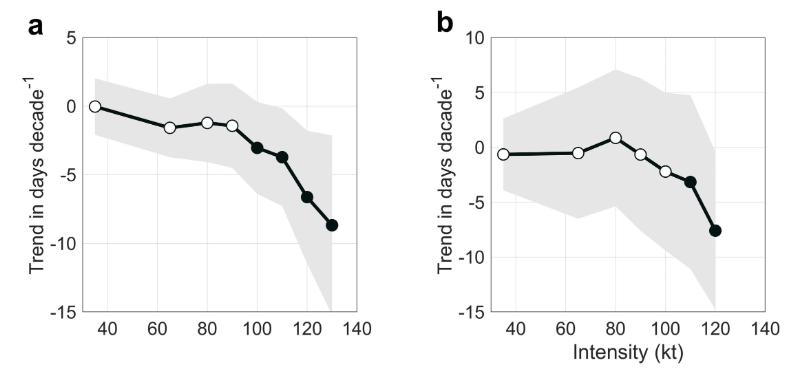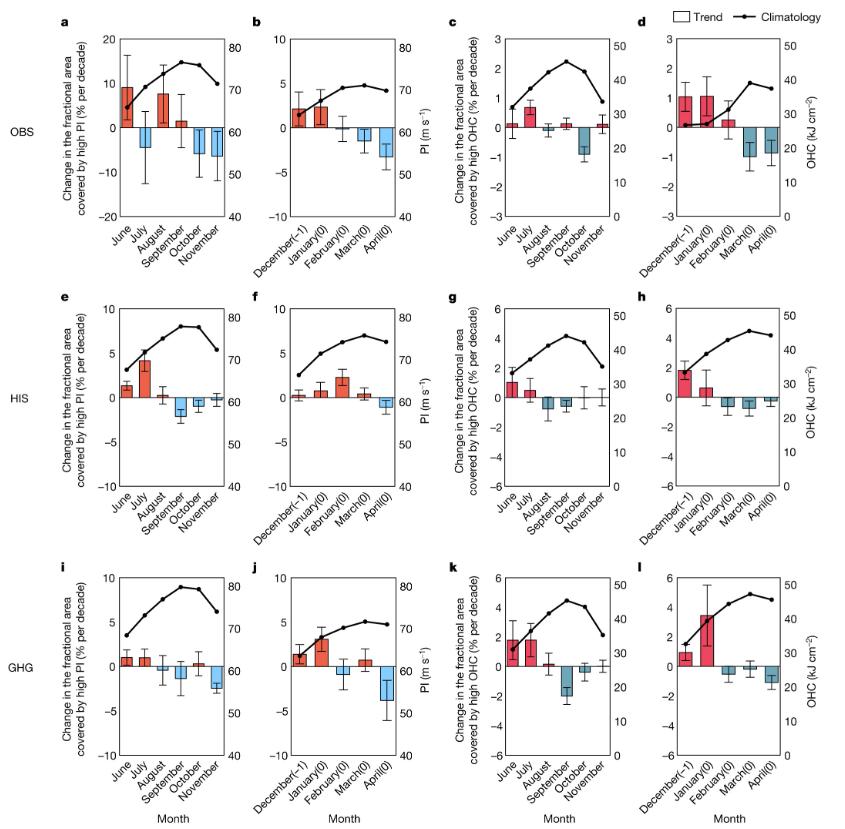Shan, K., Lin, Y., Chu, PS., Yu, X. & Song, F. Seasonal advance of intense tropical cyclones in a warming climate. Nature 623, 83–89 (2023).
https://doi.org/10.1038/s41586-023-06544-0
Dr. SHAN Kaiyue, the first author from the Department of Hydraulic Engineering at Tsinghua University, collaborated with Professor YU Xiping, an endowed chair at Southern University of Science and Technology (corresponding author), Professor SONG Fengfei from Ocean University of China (corresponding author), Professor LIN Yanluan from the Department of Earth System Science at Tsinghua University, and Professor Pao-Shin Chu from the University of Hawaii. Together, they achieved innovative results in studying the response characteristics of intense tropical cyclone activities to climate change. Utilizing the latest observational data and climate model information, they revealed a significant seasonal advance phenomenon in intense tropical cyclone activities in recent decades and demonstrated that global warming is the primary driving factor behind this phenomenon.
As the global climate system warms, the characteristics of extreme weather events, represented by cyclones (hurricanes, tropical cyclones), are changing. This shift poses unprecedented challenges to the sustainable development of human society and the economy. Over the past few decades, there has been an overall increase in the intensity of cyclones. Phenomena such as the rising frequency and severity of intense tropical cyclone events have garnered widespread international attention.
The research reveals a significant trend of earlier occurrences of intense tropical cyclones globally (see Figure 1). Based on statistical patterns derived from multi-year averages, intense tropical cyclones are most frequent in the autumn. However, in recent years, there has been an increasing number of intense tropical cyclones during the peak of summer. An example of such an intense tropical cyclone that significantly impacted the Beijing-Tianjin-Hebei region in July of this year is “Du Su Rui.” The research further indicates that the shift of intense tropical cyclones from autumn to summer increases the risk of compound disasters when they coincide with extreme rainfall events caused by the summer monsoon. Strong evidence supporting this has been found in the southern regions of China and the Gulf of Mexico in the United States, respectively. The destructive impact of such compound disaster events far exceeds that of any single disaster, posing significant challenges to existing disaster prevention and mitigation systems.

Figure 1. The seasonal advance of the global intense tropical cyclone. (a) Northern hemisphere (b) Southern hemisphere, seasonal distribution (line chart) and trend in intense tropical cyclone numbers (bar chart); (c) Spatial distribution of seasonal changes in intense tropical cyclones (autumn-summer).
The study found that the phenomenon of seasonal advance only occurs in intense tropical cyclone events, while the seasonal distribution of weak tropical cyclone events shows no significant changes (refer to Figure 2). These differences between intense and weak tropical cyclone events provide the research team with insights into exploring the underlying mechanisms behind the seasonal advance of intense tropical cyclones. Rapid intensification is a key process that distinguishes intense tropical cyclones from weaker ones. Intense tropical cyclones typically undergo at least one episode of rapid intensification during their lifecycle, wherein the maximum sustained wind speed increases by 18 m/s within 24 hours. Data analysis confirms that the rapid intensification process of tropical cyclones also exhibits a significant trend of seasonal advance. The research team comprehensively analyzed the seasonal variations in atmospheric and oceanic elements influencing the rapid intensification process of tropical cyclones. The results indicate that atmospheric elements favorable for tropical cyclone rapid intensification show no significant seasonal changes. However, oceanic elements closely associated with sea surface temperatures, such as tropical cyclone potential intensity and ocean heat content, exhibit a pronounced trend of seasonal advance (see Figure 3). To clarify the relative contributions of human activities and natural variability to the seasonal advance of these oceanic elements, the research team conducted attribution analysis based on the latest climate models through both all-forcing and single-forcing experiments. The findings reveal that the global warming caused by human greenhouse gas emissions plays a dominant role in the seasonal advance of intense tropical cyclones.

Figure 2. Seasonal variation trends of tropical cyclones with different intensity levels. (a) Northern hemisphere (b) Southern hemisphere. Relationship between the trend of occurrence time and typhoon intensity levels.

Figure 3. Seasonal advance of oceanic elements favorable for tropical cyclone rapid intensification. (First line) Observation, (Second line) External Forcing, and (Third line) Greenhouse Gas Forcing under High Percentile Cyclone (left column) and Ocean Heat Content (right column) Seasonal Distribution (line chart) and Trend Change (bar chart).
The research findings have been published in the main section of the journal “Nature” under the title “Seasonal Advance of Intense Tropical Cyclones in a Warming Climate.”
Paper link: https://www.nature.com/articles/s41586-023-06544-0